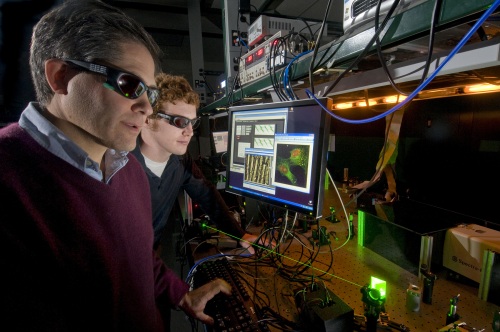A group of researchers out of Michigan State University has developed a laser capable of detecting micro traces of explosive chemicals on clothing and luggage.

Marcos Dantus has invented a low-energy, bomb-detecting laser.
Marcos Dantus, who led the group research and is an MSU chemistry professor as well as the founder of BioPhotonic Solutions, published a paper in the current issue of Applied Physics Letters describing the technology.
“Since this method uses a single beam and requires no bulky spectrometers, it is quite practical and could scan many people and their belongings quickly,” Dantus said. “Not only does it detect the explosive material, but it also provides an image of the chemical’s exact location, even if it’s merely a minute trace on a zipper.”
Now, while the vision of airport security guards armed with laser guns might jump to the forefront of a lot of our minds, the implementation of the technology is anything but intimidating. In all likelihood, it’ll be placed in a conveyor belt, similar to the X-ray scanners currently used at airport security checkpoints.
Technology like this has been in the works for years, but the problem has always been in trying to develop it to the point where it is safe for use on luggage as well as humans. The breakthrough came in a collaboration between Dantus and researchers at Harvard University, who had been working on a laser that could be used to detect cancer but had the beam output of a presentation pointer.
“While working on biomedical imaging, I began exploring additional applications,” Dantus said. “We soon learned how effective it was for detecting traces of hazardous substances from distances up to 10 meters away.”
The bomb-detecting laser that Dantus came up with works as a single beam and has two pulses. The first resonates with certain chemical frequencies found in explosives, while the second, a shadow pulse, acts as a reference.
Any discrepancy between the two indicates the presence of explosive materials.
“The laser is not affected by the color or surface of clothes or luggage,” Dantus said. “The resonant pulse and the shadow pulse are always in balance unless something is detected. Our method has Raman chemical specificity, excellent sensitivity, and robust performance on virtually all surfaces.”
An aerospace company has already expressed interest in the technology. Dantus predicts that with additional funding, a standalone prototype could be created in approximately one year.
Story via: msutoday.msu.edu
Advertisement





